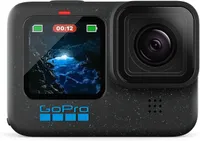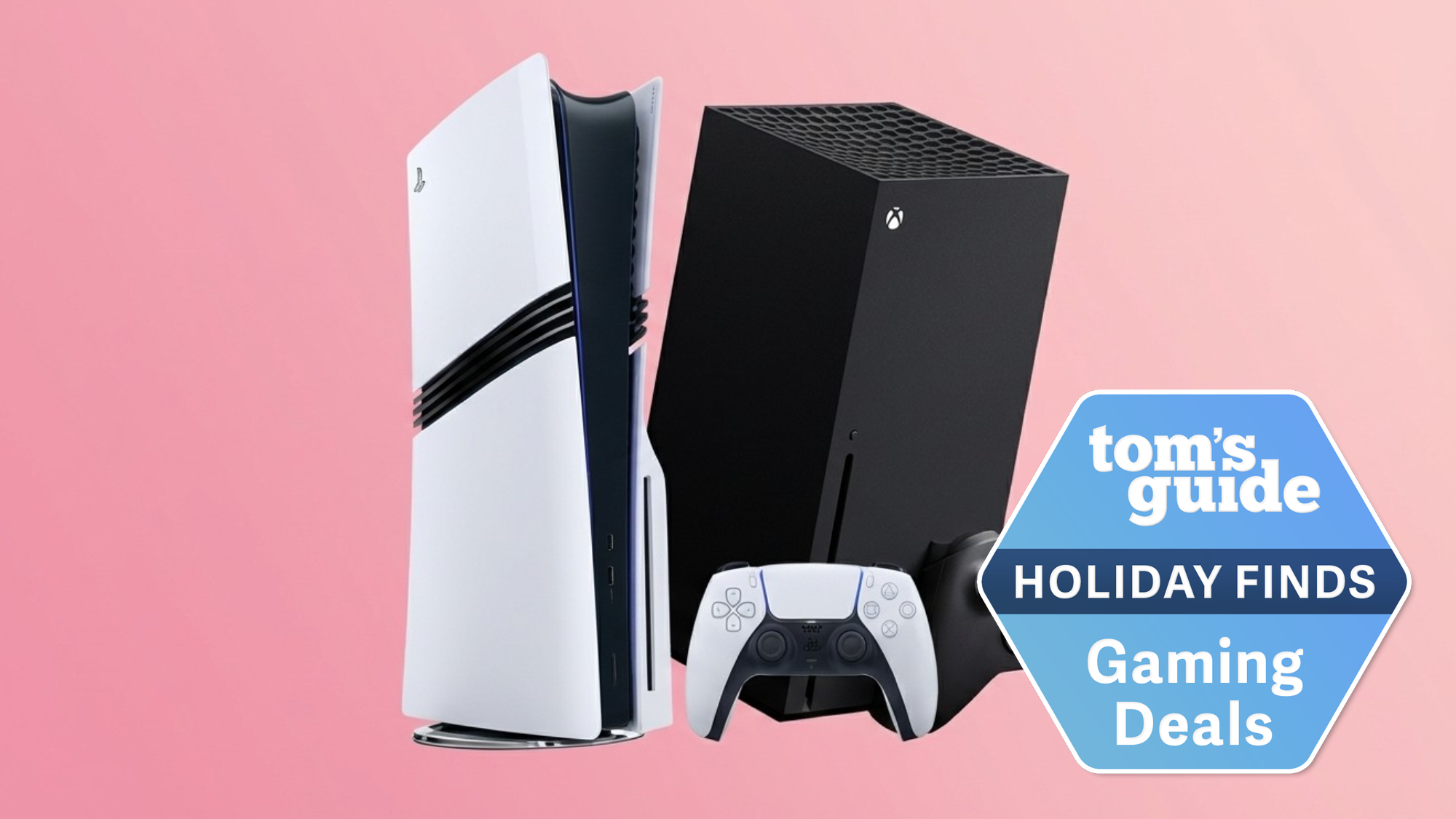Best GoPro camera in 2025

Want one of the best GoPro cameras? You're making a solid choice. GoPro cameras are some of the best action cameras, which isn't surprising — after all, GoPro created the original winning formula for action cameras.
That's probably why many people use the terms "GoPro" and "action camera" interchangeably (although I'd tell them off for doing so). But which is the best GoPro for you? There are loads of them, right? Surely the best GoPro is the latest GoPro Hero13 Black?
Well, yes and no. It’s not quite as simple as that. There are a few elements at play, obviously including budget and the features you actually need. I test every single action and 360 camera here at Tom's Guide, which means I test all GoPros! To help you find the best GoPro for you, I've rounded up my favorites for different needs. Read on.
The quick list
Here's a quick overview of the three best GoPro cameras you can buy right now based on my personal extensive testing and reviews.
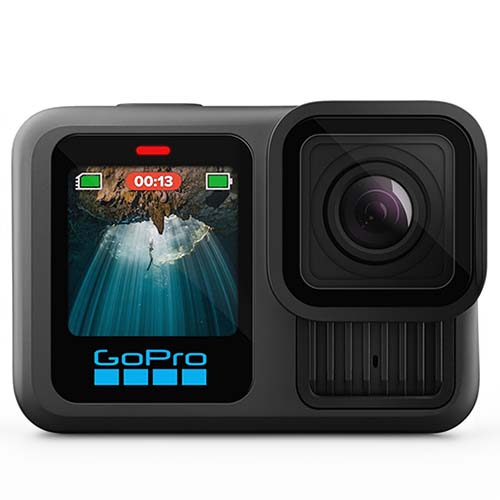
The best GoPro
The Hero13 Black is the latest and greatest GoPro, packing 5.3K/60p video, magnetic mounting and an array of creative lens mods.

The best budget GoPro
The GoPro Hero (2024) is the best budget GoPro, offering a stripped back shooting experience, with an equally minimal price.

The best 360 GoPro
The GoPro MAX2 is a phenomenal 360 camera, and the only GoPro to choose if you need immersive and flexible 360 video.

Pete is a senior editor at Tom's Guide, heading up the in-house reviews team and also overseeing all the site's cameras coverage. Pete tests out all the latest and greatest action cameras (as well as some not-so-great ones), including the very latest GoPros. His recommendation? "If you have the money, it has to be the Hero13 Black due to the awesome lens mods and magnetic mount," he says. "But honestly, if you aren't fussed about lenses, the Hero12 Black is a great way to save money and still shoot beautiful +4K video."
The best GoPro overall

Specifications
Reasons to buy
Reasons to avoid
The GoPro Hero13 Black is the best GoPro overall, although it's only an evolution, not revolution of its predecessor the Hero12 Black. The Hero13 Black packs the same internals as its forebear, meaning 5.3K/60p, Hypersmooth 6.0 stabilization, 3 microphones, 33-foot waterproofing and a $399 launch price.
The updates to the Hero13 Black are relatively modest, although they could make a huge difference to how much you're able to get from the camera. The Hero13 Black's standout new feature are the expanded range of lens mods, not compatible with earlier models. These give you access to a macro lens, a new ultra-wide lens, ND filters and (although not launched at the time of writing) an anamorphic lens for cinematic widescreen video straight out of camera. There's also a new magnetic lens mount for quickly swapping accessories, plus an upgraded 1,900mAh battery.
In testing, we loved the Hero13 Black's beautiful video quality and stabilization, especially its neat timewarp modes (although these are also on older models). Audio performance is decent, and the Hero13 Black features a RAW audio recording mode, producing a separate high res audio file for editing in post. Talking of editing, the Hero13 Black has other pro features, including HLG and Log profiles for wide dynamic range capture, and 10-bit color for an increased gamut.
While it's mostly the same camera as the Hero12 Black, there's no denying that the Hero13 Black's extra features make it the better model, and are well worth the spend. That's especially true if you're going to be using your GoPro for serious content creation or a rugged b-cam for professional work.
Find out more in our GoPro Hero13 Black review.
The best budget GoPro
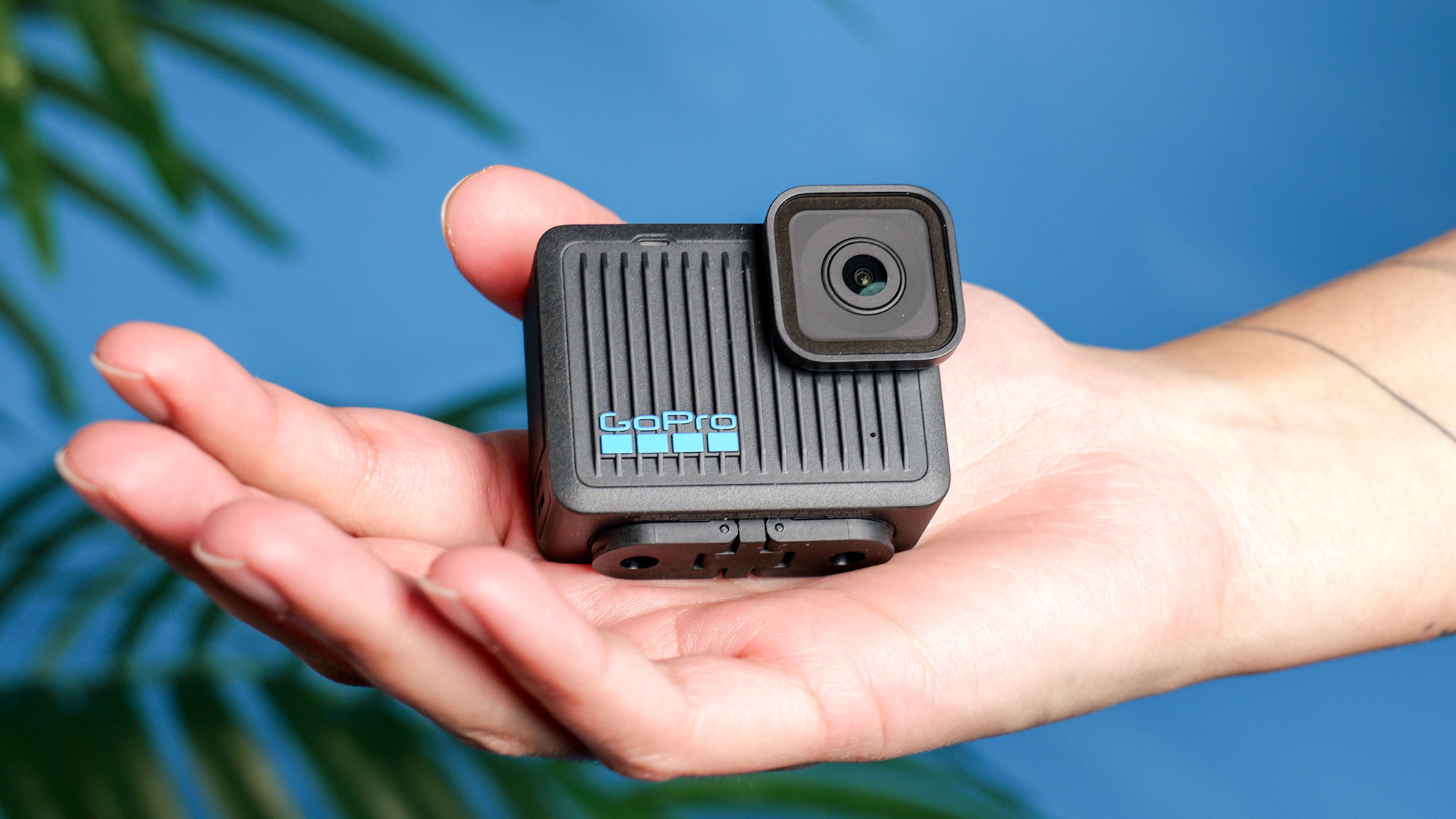
Specifications
Reasons to buy
Reasons to avoid
The GoPro Hero is the best budget GoPro you can buy, primarily because it's the only actual budget GoPro — at least that's still sold new. It's also the tiniest GoPro around, so if you need to mount a camera in a tight spot, or somewhere weird, this is the camera for you. Now, this isn't the best small action camera — that title goes to the Insta360 Go 3S, which offers more features and an even smaller thumb camera, but comes with extra cost.
However, this is a best GoPros guide, and the Hero is the best small (and budget) GoPro there is! The GoPro Hero shoots great-looking 4K/30p, so it isn't one for pros who need 4K/60p or higher, but still packs enough performance for excellent-looking content for YouTube or social.
The Hero is also smaller and lighter than virtually any other camera — even the tiny Insta360 Go 3S and Insta360 Go Ultra (when those are in their action pods).
The GoPro Hero also has fantastic battery life for such a tiny camera. I managed to achieve 1 hour and 43 minutes at 4K/30p, which is astounding given the battery is only 1,255mAh. There was no overheating at all either, and the camera recorded all that footage to a single file, so no breaks to cool down.
Of course, the GoPro Hero is also a lot cheaper than anything else on this list, and much cheaper than its tiny action cam rivals from Insta360. That comes with sacrifices, of course: there are no modes for timelapses or hyperlapses, and in fact, aside from photo and slow motion modes, there are not a whole lot of features on this camera at all. It's a stripped back experience, but that's what a lot of people will want from a budget cam — to get the fundamentals right without excess features bringing up the price.
Read my full GoPro Hero (2024) review.
The best 360 GoPro

Specifications
Reasons to buy
Reasons to avoid
The GoPro MAX2 is a fantastic second entry into GoPro's 360 MAX lineup, succeeding 2019's original MAX. By the MAX2's 2025 launch, the original MAX was well outdated and had been outpaced by rivals from Insta360 and DJI, each offering 8K 360-degree capture, which allows for reframing in up to 4K.
Thankfully, GoPro came back punching with the MAX2, which won my award for the best 360 camera for pros after it launched. This cameras records in "true" 8K, which means it maintains a full 8K resolution after stitching and doesn't need to upscale back to 8K (as its rivals do). This is important for pro users, as any extra true resolution allows more flexibility when cropping in post.
Other pro-oriented features include Log recording, 10-bit color, and 120Mpbs bit rates by default, with up to 300Mbps possible via GoPro Labs. And that brings me onto Labs, which allows users to install custom open source firmware to tailor the camera to their particular workflow requirements. All of this makes the MAX2 excellent for professional users with specific post-production needs, or who need as much flexibility for post as possible.
Naturally, the MAX2 features GoPro's HyperSmooth MAX stabilization, which does a phenomenal job of smoothing out bumpy footage. It has three mics, which allows for 360-degree sound to match audio to video framing, and you can choose which mic is used for single-lens recording. Its wind reduction algorithms aren't as strong as rivals like the Insta360 X5, though.
Overall, the MAX2 is a fantastic 360 camera, which offers a huge amount of performance while also undercutting the Insta360 X5 and DJI Osmo 360 on price in the U.S.
Read my full GoPro MAX2 review.
Also tested
If you can't stretch to the updated Hero13 Black, the Hero12 Black is a solid (and slightly cheaper) choice instead. It offers many of the same features as the Hero13 Black, only without the same lens mount, meaning you don't have access to the full range of newer Lens Mods. The Hero12 Black also has a slightly smaller battery than the Hero13 Black. These are minor drawbacks, though, and this is still a fantastic action camera worth considering.
Best GoPro camera: Specs compared
We know all the numbers and specs can be a little overwhelming, so we've laid them all out side by side in this table to make it easier for you to compare the details. Remember, though, specs aren't everything and don't necessarily make a camera right for you, so keep reading to see our full analysis of each GoPro.
| Header Cell - Column 0 | GoPro Hero13 Black | GoPro Hero (2024) | GoPro MAX2 | GoPro Hero12 Black |
|---|---|---|---|---|
Price (at launch) | $399 | $199 | $399 | $399 |
Video Resolution (max) | 5.3K/60fps | 4K/30fps | 8K/30fps (360); 4K/60fps (Single lens) | 5.3K/60fps |
Photo Resolution | 27MP | 12MP | 29MP (360); 12MP (Single lens) | 27MP |
Display | Front and rear | Rear only | Rear only | Front and rear |
Slo-Mo | 120fps (4K), 400fps (720p, burst) | 60fps (2.7K) | 100fps (4K) | 120fps (4K), 240fps (2.7K) |
HDR | Yes (HLG) | No | No | Yes (HLG) |
Log | Yes | No | Yes | Yes |
Color bit depth (max) | 10-bit | 8-bit | 10-bit | 10-bit |
In-camera stabilization | HyperSmooth 6.0 | None (via Quik app only) | MAX HyperSmooth | HyperSmooth 6.0 |
Microphones | 3 | 2 | 3 | 3 |
Water Resistance | 33 feet | 16 feet | 16 feet | 33 feet |
Battery | 1,900 mAh | 1,255mAh | 1,960 mAh | 1,720 mAh |
Size | 2.8 x 2 x 1.3 inches | 2.2 x 1.87 x 1.15 inches | 2.5 x 2.7 x 1.9 inches | 2.8 x 2 x 1.3 inches |
Weight | 5.4 ounces | 3 ounces | 6.8 ounces | 5.4 ounces |
What to look for when buying a GoPro camera
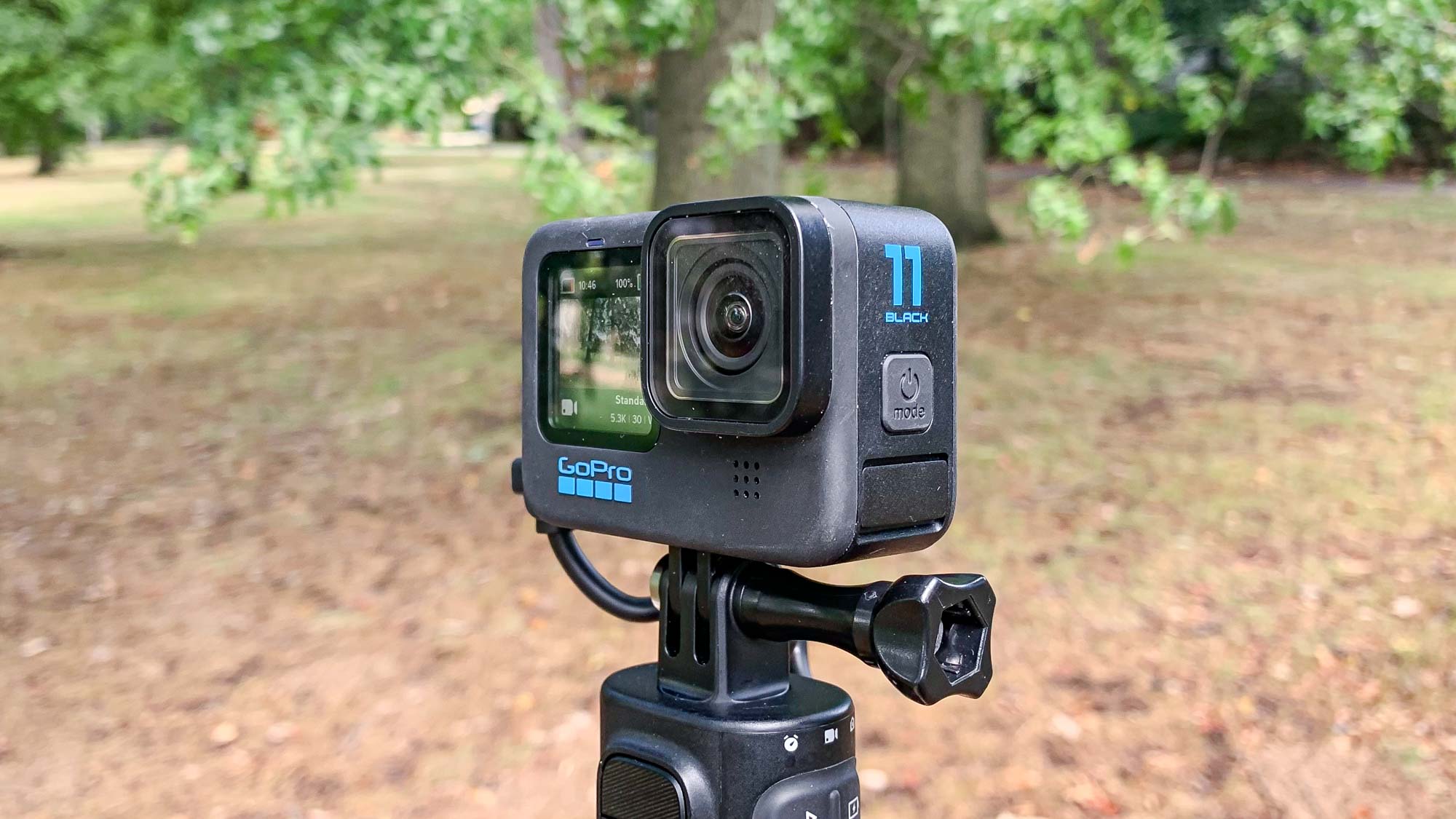
Design
While all of the best GoPro cameras (with the exception of the Max) share a similar design, there are a few differences, especially between newer and older models.
With the Hero8 Black, GoPro redesigned the camera so that the mounting "fingers" — used to connect the camera to GoPro accessories — are built directly into the bottom of the camera. This way, you don't need to attach a case if you want to mount the camera to a selfie stick or some other device.
All GoPro models have a rear display which you can use to frame your shot and adjust settings, as well as a front-facing LCD that shows your recording time, battery life, and more. However, the Hero9 and onwards have color displays on the front, which can also be used to frame yourself in a shot.
Video and image resolution
Both the GoPro Hero8 Black and Hero7 Black can shoot 4K video at 60 frames per second, as well as slo-mo video at 1080p/240 fps. The GoPro Hero9 Black was the first GoPro that can shoot video at 5K resolution, albeit at a max framerate of 30 fps. The Hero10 ups that to 60 fps. The GoPro Hero11 can shoot 5K/60 fps, while the Hero12 can shoot 5.3K/60 fps — both models can shoot 4K/120 fps slow motion.
On the stills front, the Hero12 and Hero11 take 27MP stills; the Hero10 takes 23MP stills; the Hero9 takes 20MP stills; while the Hero8 Black and Hero7 Black are both limited to 12MP.
The GoPro MAX2 is in a class of its own, as it shoots 8K 360 videos, with a huge array of professional features. If you need a 360 cam, it's the best GoPro for you.
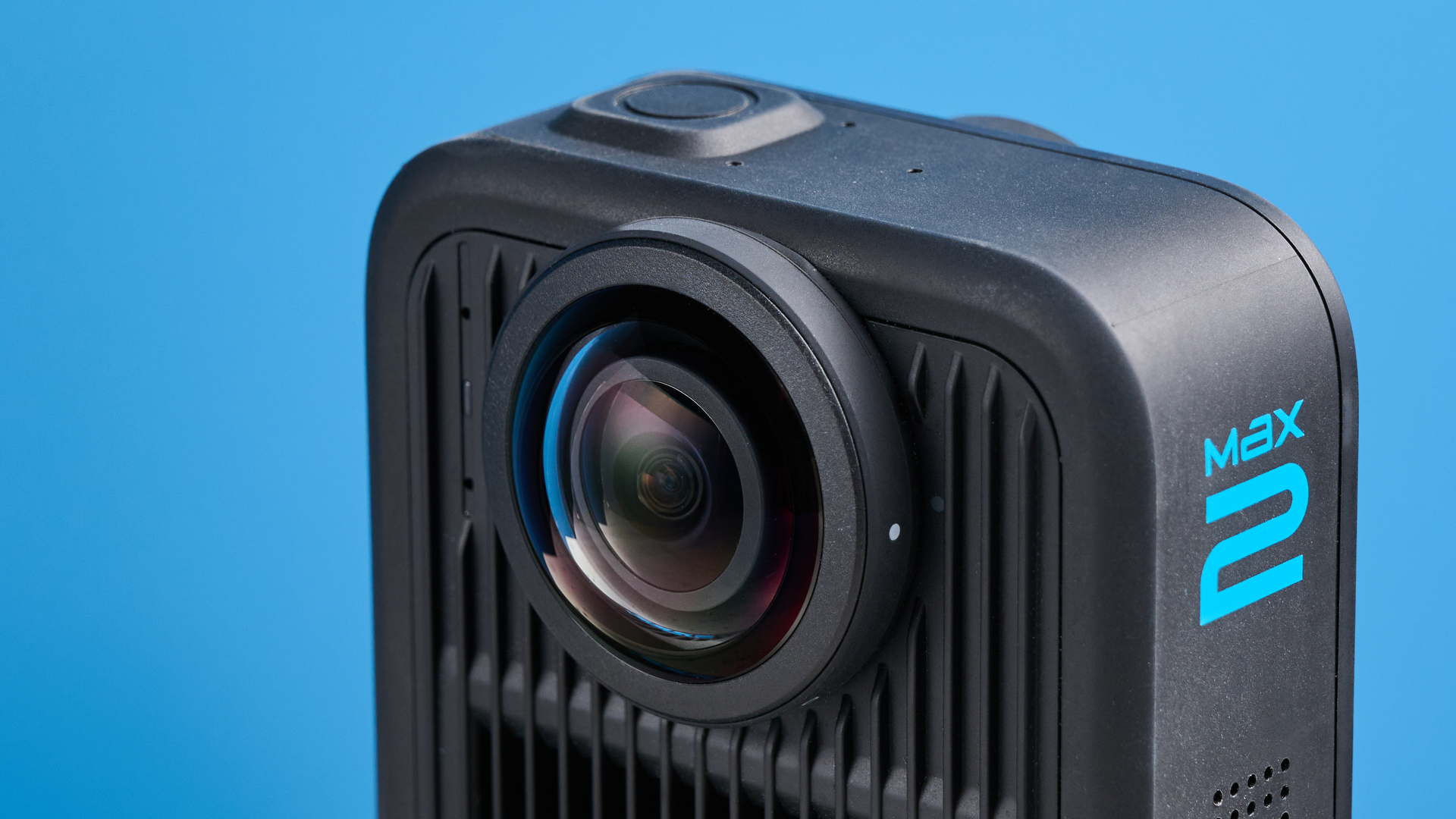
Image stabilization
One of the defining features of the best GoPro cameras has been electronic image stabilization, which goes a long way towards smoothing out shaky action cam footage. GoPro calls its technology HyperSmooth; hyperbole aside, it's very effective. Newer (and pricier) GoPro models have more advanced versions of HyperSmooth.
If you're taking really shaky video, though, we recommend the GoPro Max; because it's a 360 camera, and recording everything around you, it's the best at maintaining a level horizon no matter how much the camera bounces around.
Best GoPro cameras: FAQs
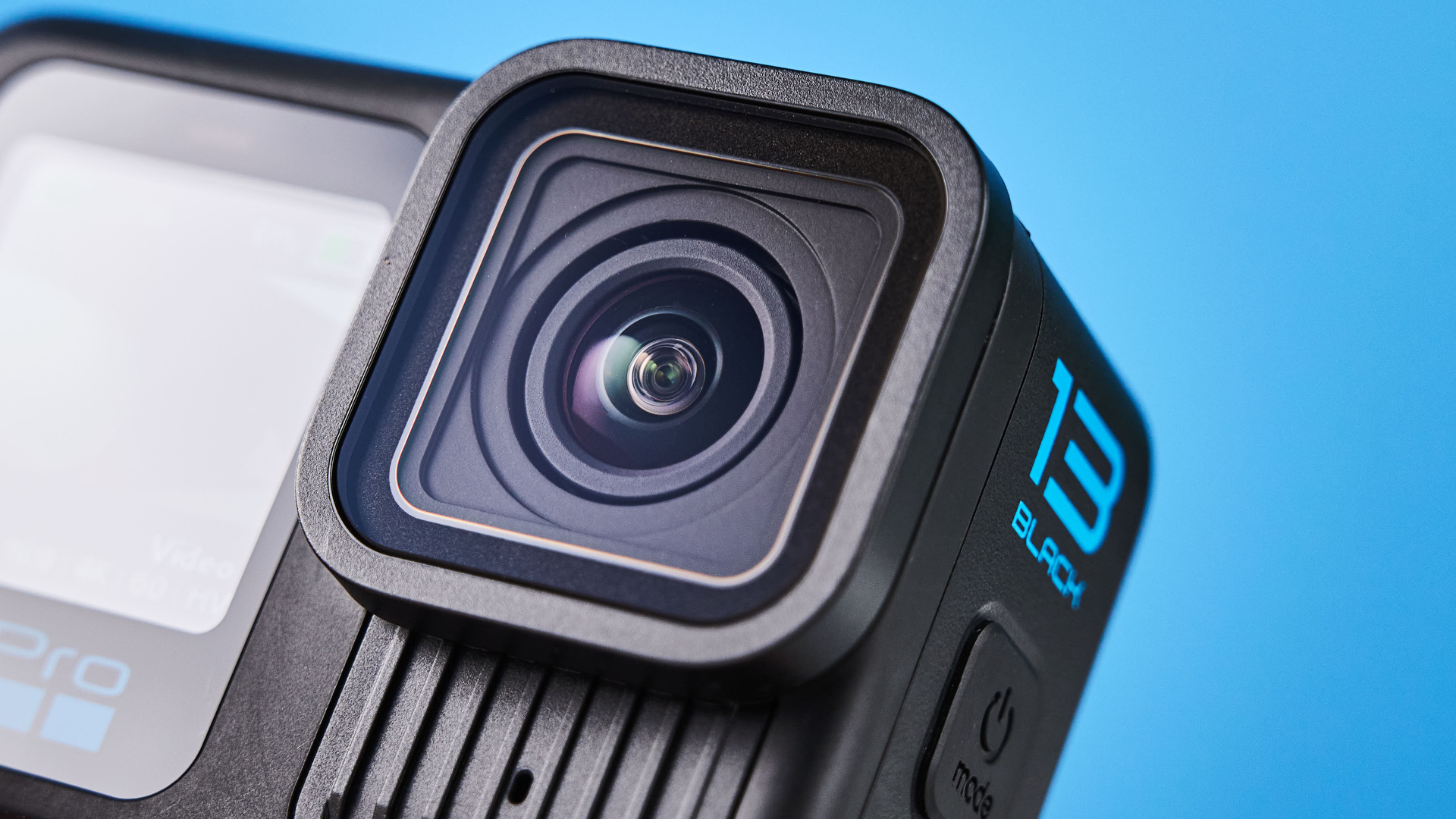
With so many models, it's easy to get a little confused about the differences between GoPros, or their use cases. Here we'll answer some of the commonly asked questions about GoPro cameras.
What is the difference between GoPro cameras?
In short, there isn't a huge difference between recent models of GoPro Hero Black cameras. These are GoPro's flagship models, and standard action cameras. They tend to evolve slowly, with the manufacturer bringing incremental updates with each major release.
Generally speaking, the GoPro Hero10 Black through Hero13 Black are relatively similar. The Hero10 Black and Hero11 Black shoot 5K video, whereas the Hero12 Black and Hero13 Black shoot 5.3K. Each successive model boasts slightly improved image stabilization over the predecessor (although the stabilization on all recent models is very good). The Hero9 Black onwards all have front selfie displays rather than the digital settings displays of prior models. Perhaps the biggest change with the most recent Hero13 Black is the support for Lens Mods. These allow you to swap out lenses to one that better suits your creative goals, such as ultra wide FoVs or the cinematic look of an anamorphic lens. The Hero12 Black supports Lens Mods, but there are fewer compatible mods than with its successor.
The GoPro Hero (2024) is not part of the "Black" lineup and is aimed more at the casual content creator and budget market. It sacrifices performance for affordability and a compact form factor, topping out at 4K/30p.
The GoPro MAX2, meanwhile, is for people that want or need 360 footage, especially professional users. It shoots 8K 360 footage, which results in up to 4K resolution when you crop (A.K.A reframe) back to 16:9 for YouTube or other video platforms. 360 footage gives you flexibility with camera angles, so you can shoot first and decide what's in frame later. It also gives you lots of awesome effects to play with, such as invisible selfie stick and tiny planet modes.
At the end of the day, all GoPro's that you'll find new right now will shoot great looking video. It just comes down to the secondary features you need.
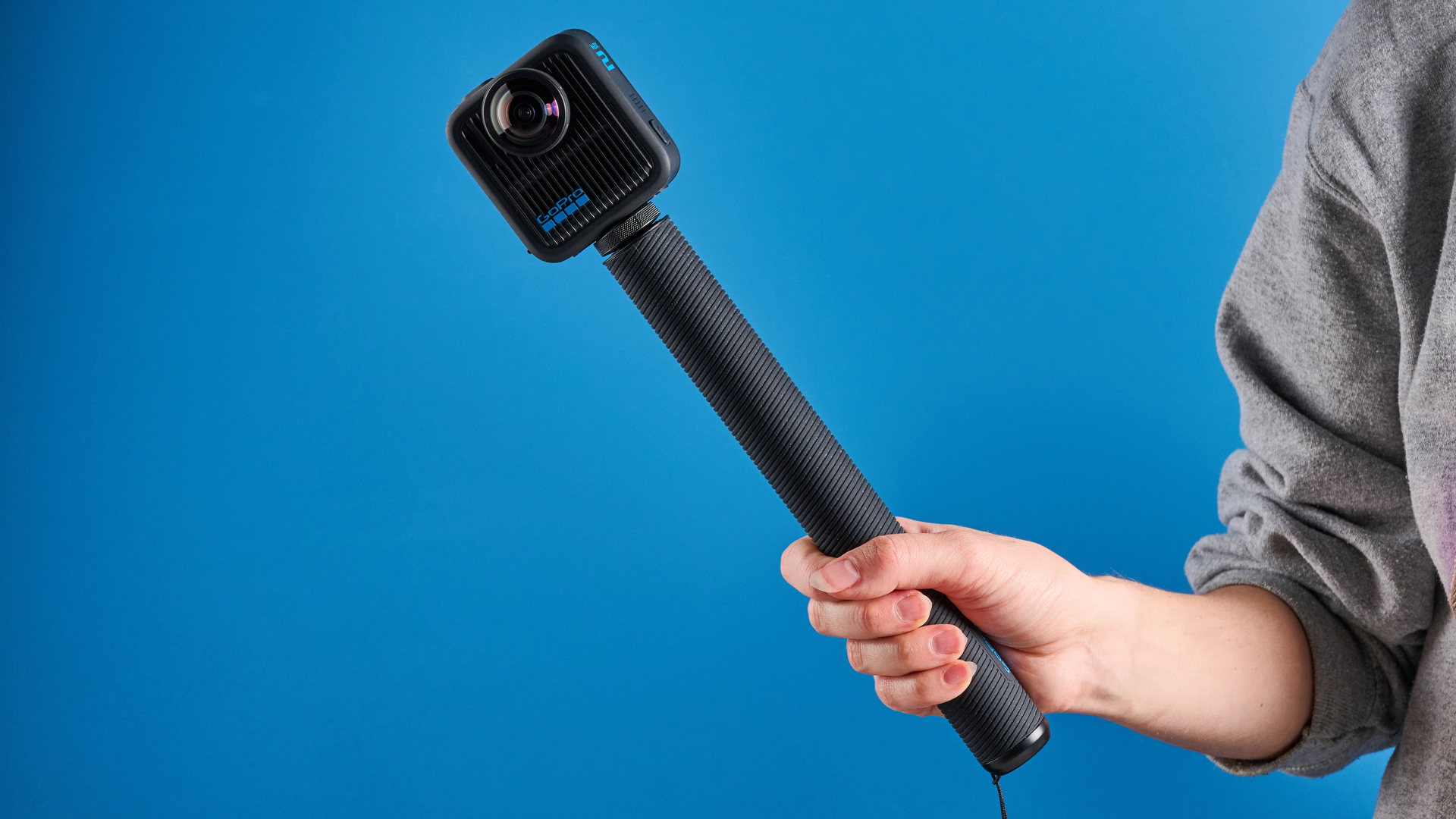
Do professionals use GoPro cameras?
Hell yeah they do. GoPros aren't just toys, they're capable of meeting the standards that professional videographers demand. The Hero Black and MAX ranges, while suitable for casual users, are designed with pros heavily in mind (and they have the hardcore features to suit).
Many professionals will use a GoPro as a rugged B-cam (to shoot secondary footage or 'b-roll'). Keep a close eye out, though, and you'll also see GoPros being used by broadcasters and professionals wherever the need arises to shoot 'a-roll' or main footage: in tough environments, where space is at a premium, or where it would be difficult to mount a full-sized camera. Many content creators, vloggers and streamers also use GoPro cameras to produce super high quality content for YouTube and social media.
The GoPro MAX2 is also our recommendation for pros that need a 360 camera. 360 cameras can essentially roll an A and B cam into one, as you can reframe to different fields of view in post, all from the same camera position. This is very useful for pro users who want to streamline the setup they're using.
Are there better cameras than GoPro?
In short, yes. But that depends what you need and what category of camera you're looking at. Our favorite action camera as I write this is the DJI Osmo Action 5 Pro, which holds the top spot on our best action cameras guide. It's a better all-round camera and offers more value for money.
We awarded the GoPro Hero13 Black the 'best for pros' spot, though, as it offers higher maximum resolution giving more flexibility for editing, cropping and oversampling. It also offers interchangeable lenses for greater creative freedom. So, depending on what you need, the GoPro Hero13 Black could still be the ideal action camera for you.
When it comes to other categories, GoPro has rested on its laurels somewhat over the last few years, allowing its rivals space for innovation and to catch up, or even get ahead. In the 360 arena, the GoPro MAX2 is a strong contender and the best for pros, but the Insta360 X5 offers more for most users, especially casual content creators.
In the small action camera, arena, the Insta360 Go Ultra and Go 3S trounce the GoPro Hero (2024) on specs alone, although the downside is that they're around double the price! So it depends what you need.
To sum it up, GoPro used to be the biggest and most respected name in the action camera industry. Its rivals have now (more than) caught up, although GoPro is still making some of the most formidable rugged cameras around.

Which GoPro cameras are 4K?
All GoPros shoot 4K these days. In fact, you'd have to go back to the utterly ancient GoPro Hero4 to find a GoPro that shoots below 4K/60fps, except the Hero (2024), which shoots at 4K/30p. If you're buying any of the GoPros on this list, they will all shoot 4K.
Do GoPro cameras need a subscription?
No. You can currently shoot with the GoPro Hero13 Black, GoPro Hero or GoPro Max without a GoPro subscription. For the latter two in particular, you need to use the GoPro Quik companion software/app or similar. The Max is a 360 camera, so its footage always needs editing and reframing in post-production software. The tiny Hero, meanwhile, has no in-camera stabilization, which is all applied in the GoPro Quik app, or can be applied in other post-production software.
A GoPro subscription gives you many benefits, such as cloud storage (important if shooting lots of high resolution video) and device replacement if yours is damaged. It isn't necessary, though. I test all the best GoPros and have never had a subscription!
If you are thinking of buying a GoPro subscription though (and it often makes sense to do so, if only for the cloud storage alone), I would wait until there's a sale on. Around key sales events, GoPro commonly discounts its 12-month plans, especially when bundled with new device purchases. That's a great way to save money but still get all the useful benefits.
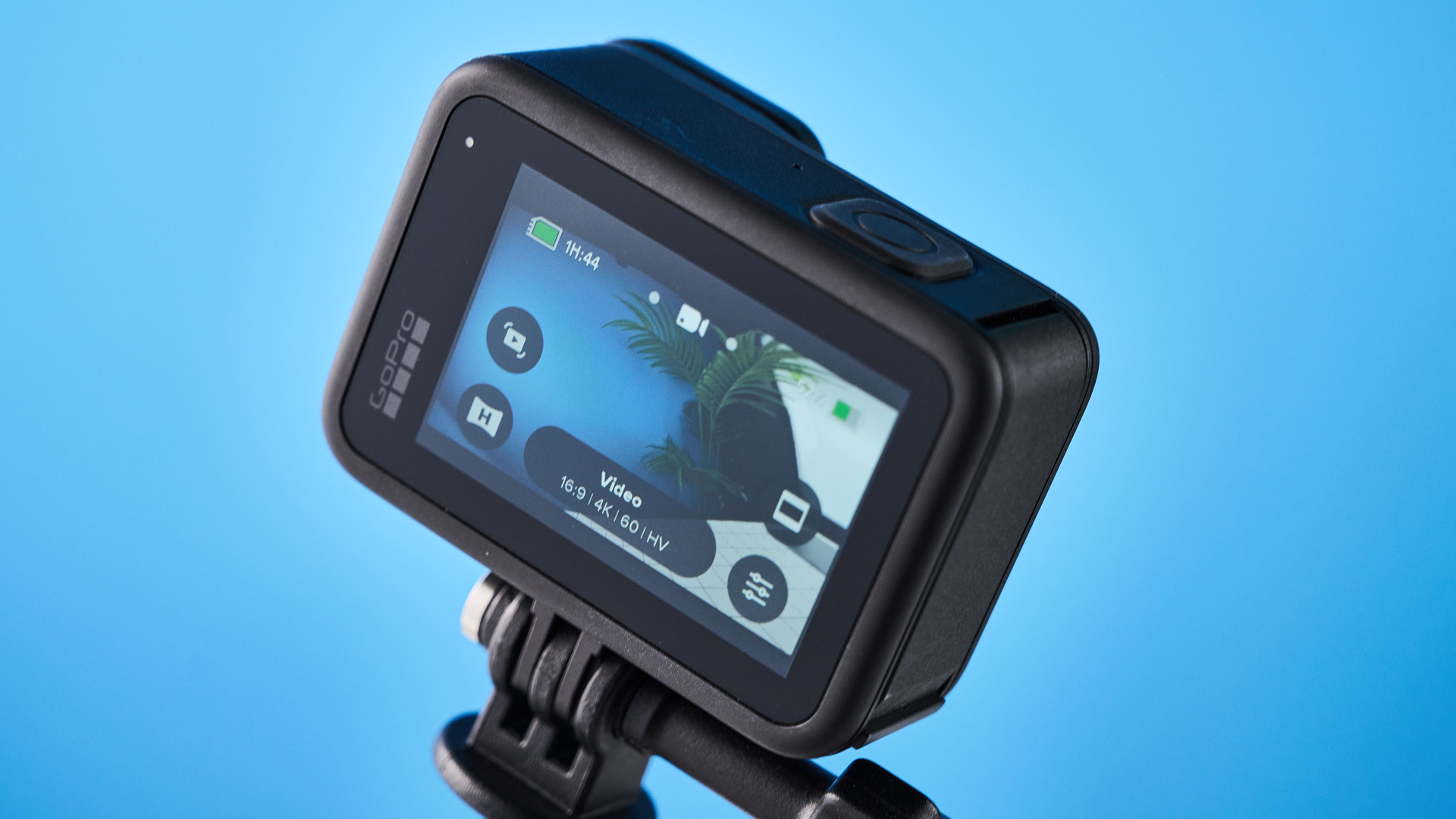
Can you use a GoPro as a webcam?
Simply put: yes. Aside from being great action cameras, there are actually a few other things that GoPros can do. For a start, GoPro has software that lets you use GoPros after the Hero8 Black as webcams. Follow our guide to how to use your GoPro as a webcam for more details.
GoPro also launched livestreaming for its cameras back to the Hero7 Black (including the GoPro Max). However, in order to use this feature, you must be a GoPro Plus subscriber, which costs $49.99 annually. The subscription also provides unlimited cloud storage of GoPro footage, no-questions-asked camera replacement, and up to 50% off GoPro accessories.
Which GoPro accessories should you buy?

We've got a separate guide to the best GoPro accessories, but if you're still deciding which is the best GoPro camera to buy and just want an idea of how much extra you might need to budget for add-ons, here's a brief overview:
- GoPro Volta: GoPro has just released this combined handle, remote, battery and tripod and we'll be giving it a try very soon. The company claims it can triple battery life, while the remote functionality works whether it's attached to a camera or wirelessly via Bluetooth. For $130, it looks like a great addition to a GoPro.
- Mounts: You're almost certainly going to want to attach your GoPro to something, whether it's a helmet, a bike or a snowboard. Neewer makes an inexpensive (about $30) 50-piece kit that includes dozens of options.
- Audio upgrades: Sound isn't the GoPro's strongest suit, but you can improve it by adding GoPro's own Media Mod, or an external microphone for as little as $40.
- Batteries: You can never have too much juice — after all, you don't want to be stuck halfway up a mountain with a dead GoPro. For $10 you can buy an extra battery plus a charging case that you can take on the go.
- Carrying case: The more kit you have, the more useful this will be. Amazon sells a good option for just $11.
Of course there are dozens of other GoPro accessories, including waterproof cases and floatation devices, screen protectors, extra lighting, extra displays and more. Check out our full list of the best GoPro accessories for more.
How I test the best GoPro cameras
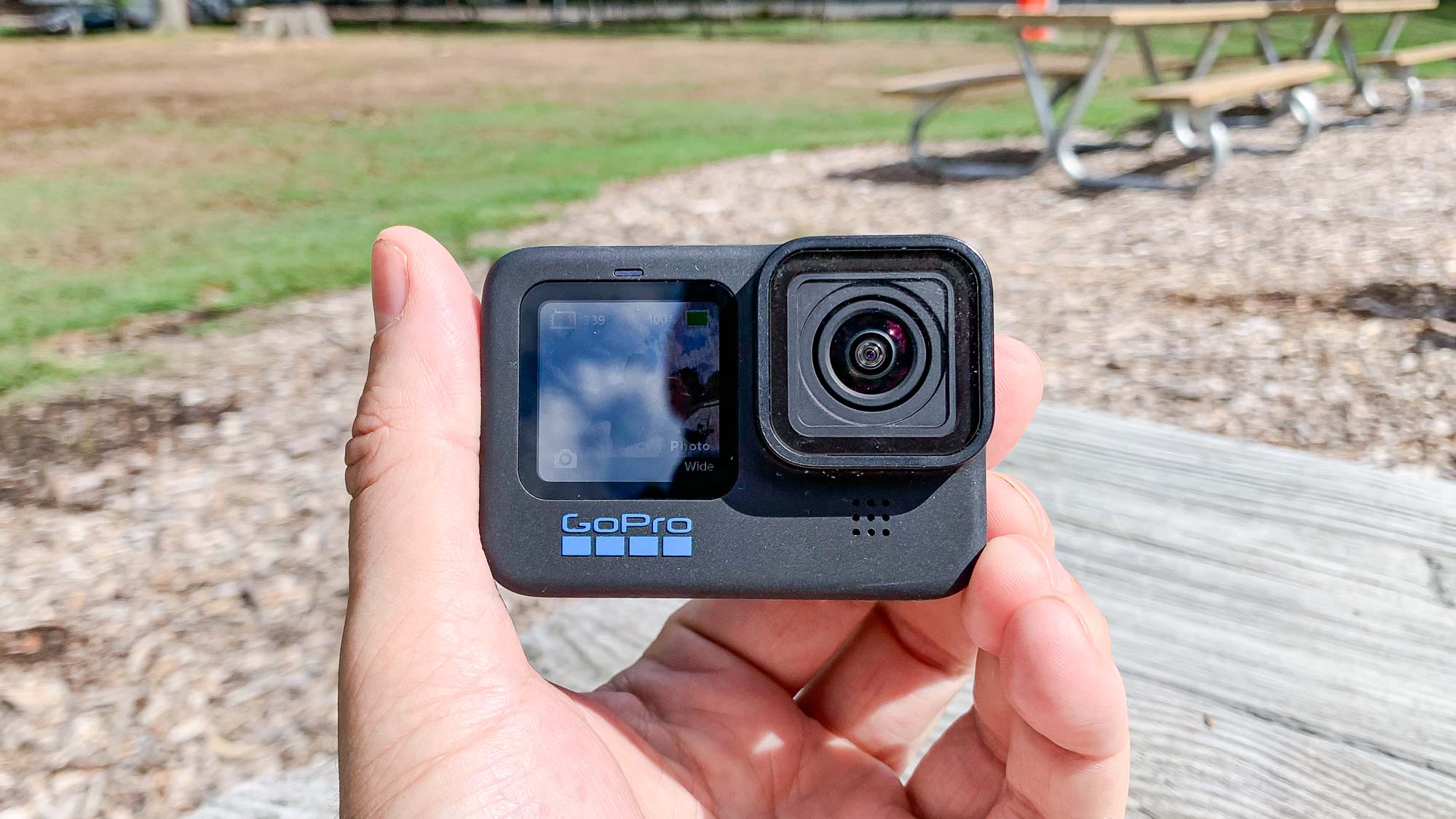
The only way to test a GoPro camera properly is to put it through its paces in the outdoors, so that's what we do. We take it to a ski slope, or out on a bike, or to a beach, and we use it in the kind of situation anyone buying it would do. We also make sure to test it in a variety of lighting conditions, and to specifically evaluate features such as low light performance and motion stabilization, so we know how well it performs.
We then look closely at the footage, and any stills we've taken, to compare the quality to that of rival devices or previous models. Finally, we consider the camera's controls, design and build, including aspects such as how easy it is to operate with gloves, and also evaluate the manufacturer's battery claims against what we found in our testing.
Get instant access to breaking news, the hottest reviews, great deals and helpful tips.

Peter is a Senior Editor at Tom's Guide, heading up the site's Reviews team and Cameras section. As a writer, he covers topics including tech, photography, gaming, hardware, motoring and food & drink. Outside of work, he's an avid photographer, specialising in architectural and portrait photography. When he's not snapping away on his beloved Fujifilm camera, he can usually be found telling everyone about his greyhounds, riding his motorcycle, squeezing as many FPS as possible out of PC games, and perfecting his espresso shots.













